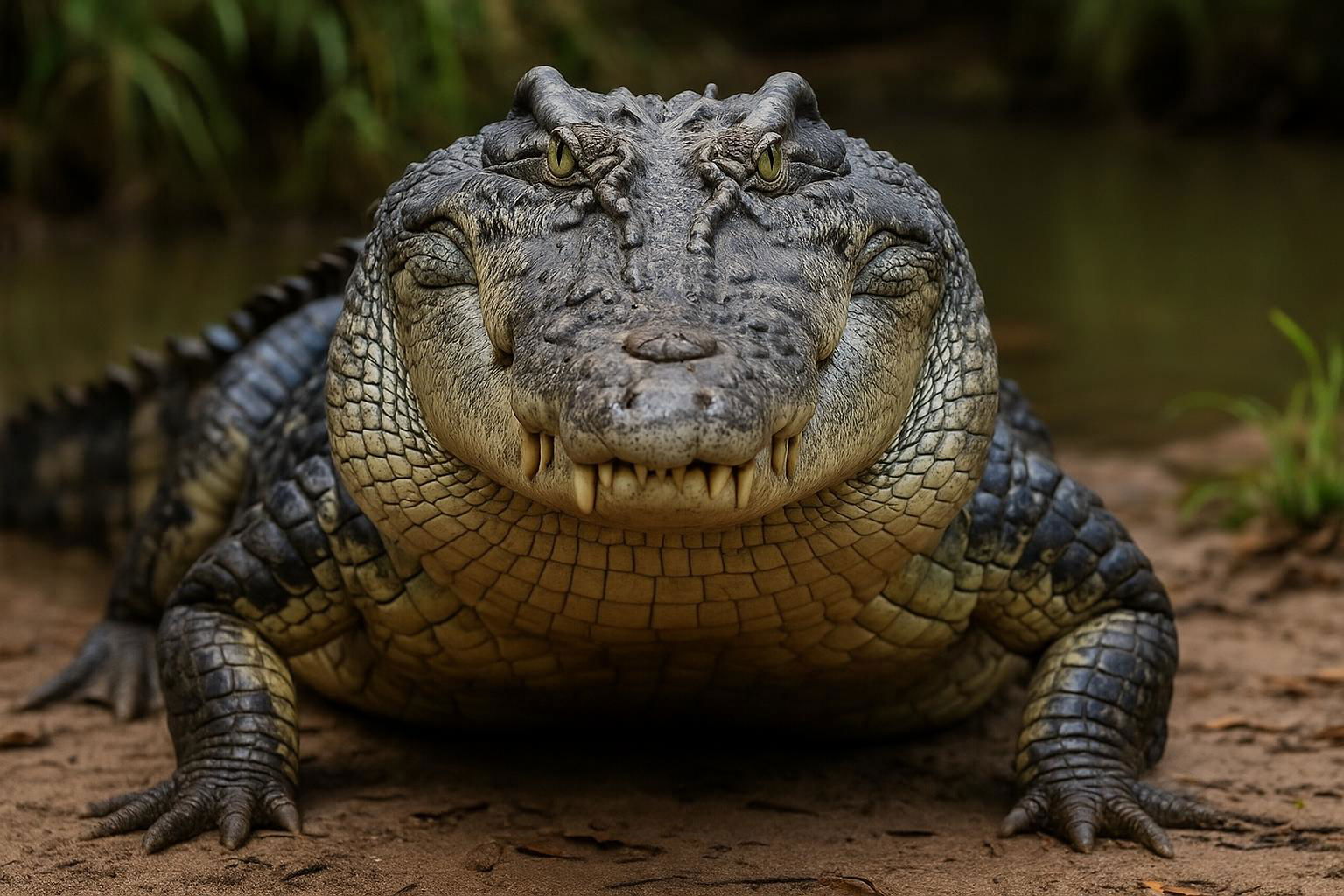
Saltwater Crocodile
Crocodylus porosus
The Saltwater Crocodile, scientifically known as Crocodylus porosus, is a formidable and ancient aquatic reptile, often regarded as the largest living crocodilian species. Found predominantly in the warm and brackish waters of Southeast Asia, Northern Australia, and surrounding regions, these apex predators favor coastal habitats like rivers, estuaries, and mangrove swamps. Adult males can grow up to 6-7 meters (20-23 feet) long and weigh around 1,000 kilograms (2,200 pounds), although individuals of such size are rare. Their robust physique is characterized by a broad snout, powerful jaws, and a thick, scaly hide that offers excellent camouflage and protection.
Saltwater Crocodiles are highly opportunistic hunters, employing a stealthy approach to ambush a diverse range of prey, from fish and birds to large mammals. They are equipped with acute sensory abilities and exceptional swimming skills, aided by a muscular tail that propels them efficiently through the water. Out of water, their movement is more cumbersome, though they can still move with surprising speed over short distances on land.
These reptiles have complex social behaviors, often exhibiting territoriality, especially during the breeding season. They are known to communicate through a series of vocalizations, particularly during courtship and when warning intruders. Female Saltwater Crocodiles are attentive to their nests, guarding their eggs fiercely until they hatch. Despite their predatory prowess, they are threatened by habitat destruction and illegal hunting, necessitating conservation efforts to ensure their survival in the wild.

 All Species & Breeds
All Species & Breeds
 Highland Cattle
Highland Cattle
 Miniature Donkeys
Miniature Donkeys
 All Species Directory
All Species Directory
 Highland Cattle in Virginia
Highland Cattle in Virginia
 Miniature Donkeys in Texas
Miniature Donkeys in Texas












